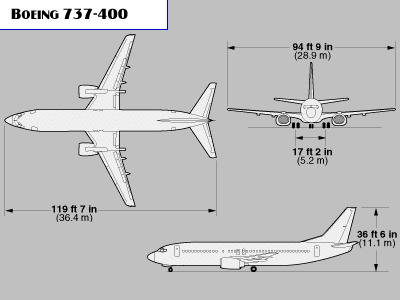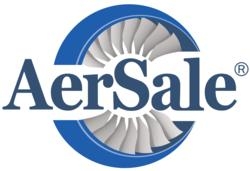Mon, Sep 05, 2016
AerSale System Approved For Boeing 737 Classic Series Aircraft
The FAA has issued a Supplemental Type Certificate (STC) for installation of AerSale's new AerSafe system on the Boeing 737 Classic series aircraft in compliance with the Fuel Tank Flammability Reduction (FTFR). This new STC is in addition to the STC for the Boeing 737 NG series, approved by the FAA earlier this year.

"AerSafe is one of the few FAA-approved options that complies with the FTFR rule, and at approximately one quarter of the cost of the nitrogen inerting system over the course of 10 years, it provides air carriers an effective low-maintenance solution," said Nicolas Finazzo, Chief Executive Officer at AerSale. "We hired some of the best aeronautical engineers in the business to develop this product, which has been a work in progress for over a year. We intend to expand further the application of AerSafe to include Boeing 757 and 767 series aircraft in the coming months."
Tested and developed to exact tolerances to fill the cavity of the Boeing 737 NG and Classic series center fuel tanks, AerSafe limits the amount of available oxygen that can ignite fuel vapors and prevents sparks from igniting an explosion. AerSafe comes as a complete prefabricated kit that can be installed at any hangar around the world. After initial installation, the system requires no maintenance or expensive spare parts. Lead time for ordering AerSafe is currently 60 days versus the one-year lead time for the nitrogen inerting system.

The FAA enacted the FTFR rule after the crash of TWA flight 800 off the coast of New York. Federal investigations revealed that the accident was the result of an explosion caused by a spark igniting fumes in the center fuel tank of the Boeing 747. The FTFR rule requires fuel tank ignition sources and flammability exposure to be reduced in aircraft most at risk. The FAA gave two options: a flammability reduction means such as nitrogen inerting, or an ignition mitigation means such as AerSafe. These systems must be installed by December 26, 2017, on all passenger aircraft that have high flammability fuel tanks and fly within or into the United States.
(Source: AerSale news release. Image from file)
More News
Aero Linx: Model Aeronautical Association of Australia MAAA clubs are about fun flying, camaraderie and community. For over 75 years, the MAAA has been Australia’s largest fl>[...]
Touchdown Zone Lighting Two rows of transverse light bars located symmetrically about the runway centerline normally at 100 foot intervals. The basic system extends 3,000 feet alon>[...]
“Discovery and innovation are central to our mission at Virgin Galactic. We’re excited to build on our successful record of facilitating scientific experiments in subor>[...]
How To Get A Story On Aero-TV News/Feature Programming How do I submit a story idea or lead to Aero-TV? If you would like to submit a story idea or lead, please contact Jim Campbel>[...]
Student Pilot Reported That During Rotation, “All Of A Sudden The Back Of The Plane Kicked To The Right..." Analysis: The student pilot reported that during rotation, “>[...]
 ANN's Daily Aero-Linx (05.02.24)
ANN's Daily Aero-Linx (05.02.24) ANN's Daily Aero-Term (05.02.24): Touchdown Zone Lighting
ANN's Daily Aero-Term (05.02.24): Touchdown Zone Lighting Aero-News: Quote of the Day (05.02.24)
Aero-News: Quote of the Day (05.02.24) ANN FAQ: Contributing To Aero-TV
ANN FAQ: Contributing To Aero-TV NTSB Final Report: Cirrus Design Corp SR20
NTSB Final Report: Cirrus Design Corp SR20




